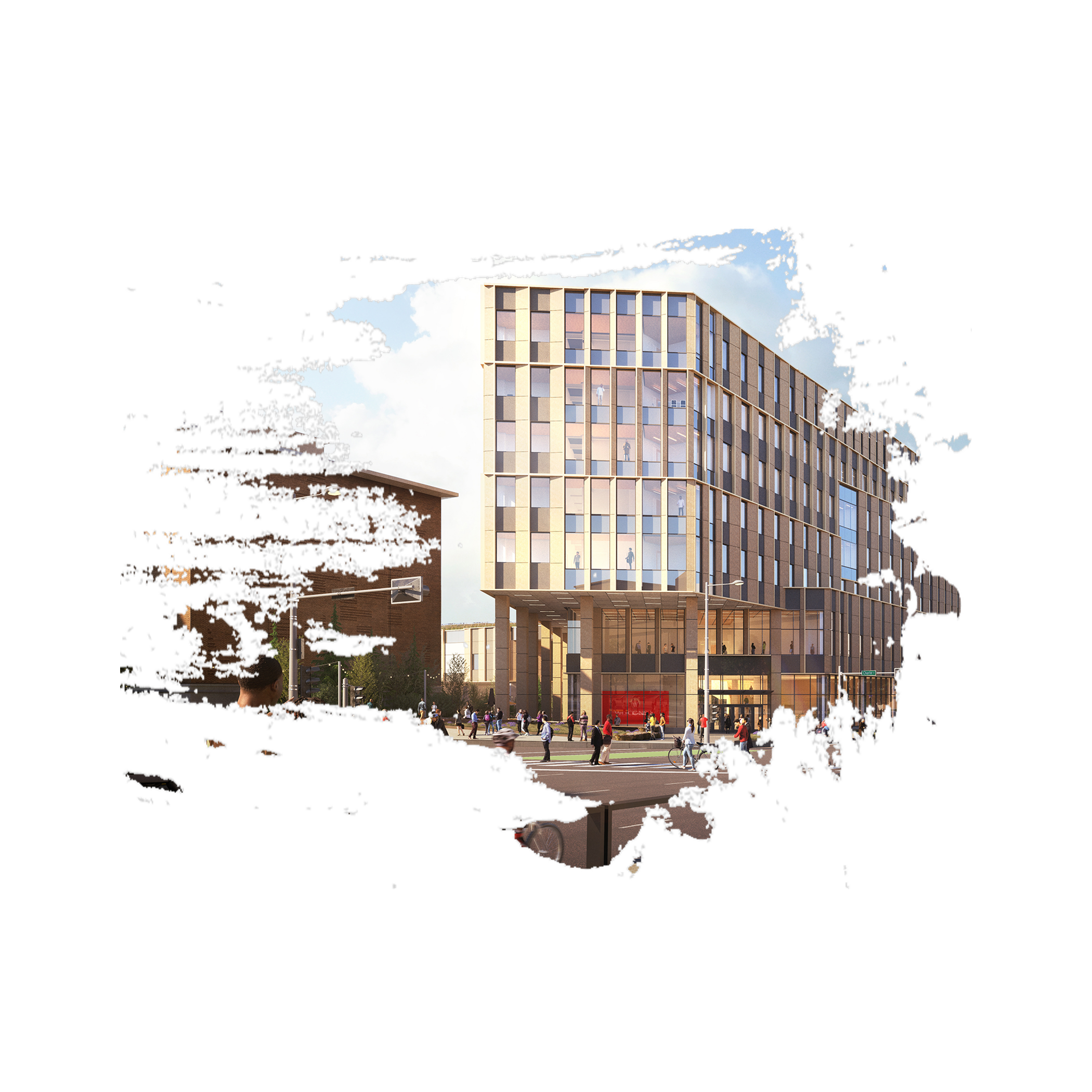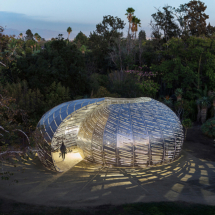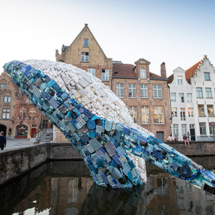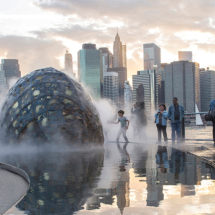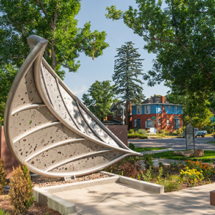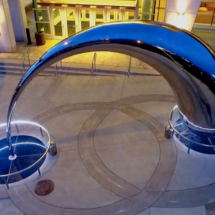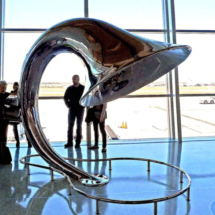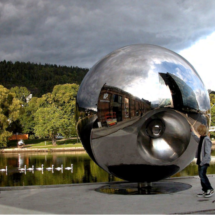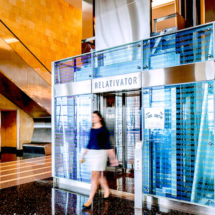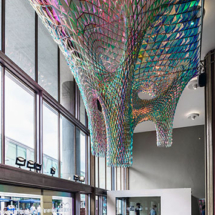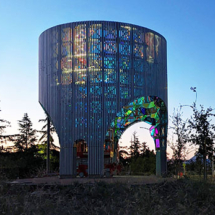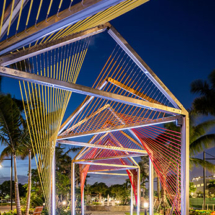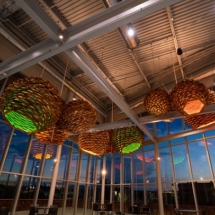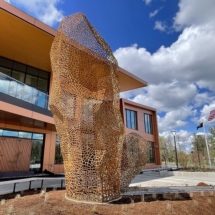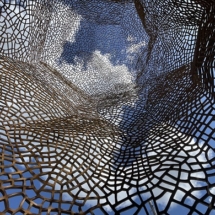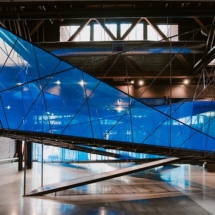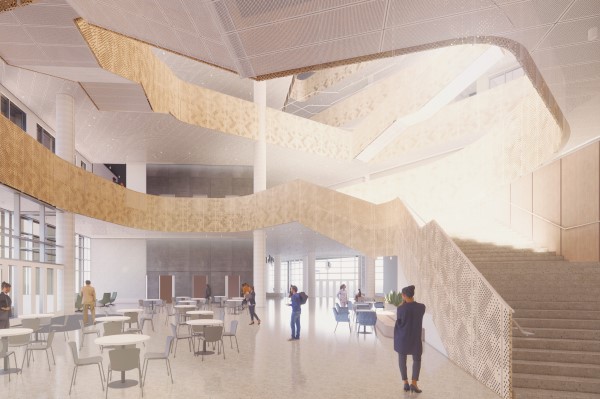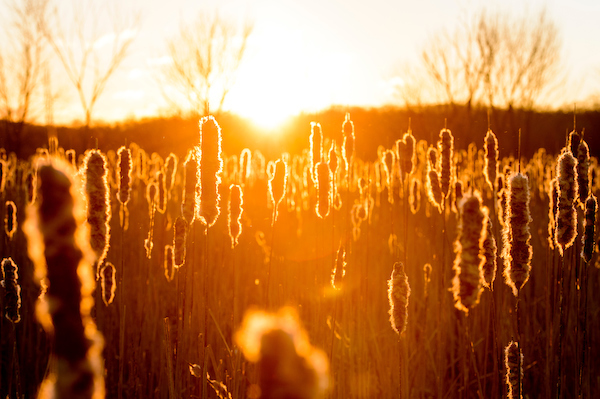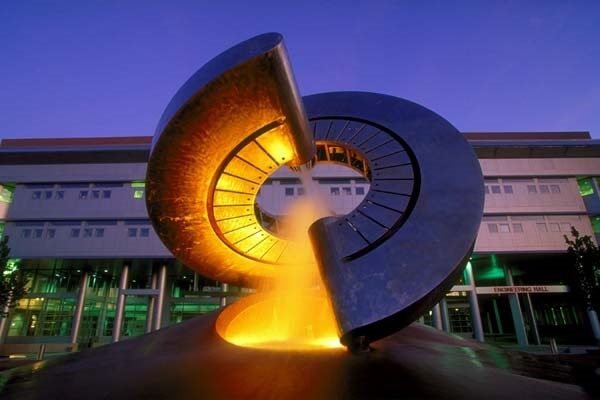Meet Our Semi-Finalists
Jason Klimosky & Lesley Chang of STUDIOKCA
STUDIOKCA is an award-winning architecture and design firm led by Jason Klimoski and Lesley Chang based in Brooklyn, New York with projects ranging in scale and complexity from lighting fixtures and interiors, to public installations, sculptures and buildings across the globe.
Jason has the home field advantage as he grew up in the Madison’s art culture. “Thinking back on some of my fondest memories, Madison helped form my appreciation for art, architecture, public space, and nature: attending Concert on the Square with my parents (and excitedly awaiting the 1812 overture to hear what I thought was real cannon fire); visiting Art Fair on the Square, and getting my first glimpses into the world of fine art photography and painting; hanging out at Memorial Union Terrace practically all summer; kayaking on Lake Mendota and Lake Monona, watching the water’s surface ripple with the wind.”
Po Shu Wang of Living Lenses
The artist based in Berkeley, California engages in a cross-disciplinary approach where he actively integrates creative approaches from unfamiliar disciplines to enrich a primarily arts and humanities core.
Po Shu’s work often makes a literal bang as many of his pieces incorporate an audio element. “I am most drawn towards where ‘a totality of information’ of any given moment and place, is also its ‘totality of noise’. In other words, noise is the sum of jumbled up information in their natural state, and the bits that our human ingenuity is capable of harnessing is information at the moment.”
Michael Szivos of SOFTlab
The artist leads SOFTlab, a design studio based in New York City. The studio combines a research-based design practice with an interest in how technology, craft, and materials come together in ways that explore the boundaries between art, architecture, other disciplines, and the public.
As a senior critic for the Yale School of Architecture and an adjunct assistant professor for the Pratt Institute School of Architecture, Michael has insight into academia including our love of acronyms. “If you are partial to acronyms, you can think of SOFTlab as a Studio Of Fantastic Things and a place that fosters experimentation through our work. On the other hand, SOFTlab was created with the idea that a group of designers with diverse interests can take on a wide range of projects in exciting and unexpected ways. Rather than a large group of experts our eclectic team relies on curiosity, difference, and experimentation to expand the bounds of what we can do with contemporary technology and ideas. Allowing us to be more nimble, malleable, and soft.”
Clayton Binkley
Trained as a sculptor and a structural engineer, Clayton Binkley is an artist, craftsman and multidisciplinary designer. In his solo work he explores how we engage with and develop emotional connections with inanimate or performative objects and spaces.
Clayton’s art doesn’t just move the audience, it sometimes moves itself! “Orphan at the Oregon State Treasury and Emergency Management headquarters is another piece that references the natural world and is the artwork in my portfolio most directly applicable to the CDIS project. Orphan is inspired by the history of seismicity that shapes the Pacific Northwest and how these events organize our society, natural landscape and physically connect disparate regions of the globe. It uses a kinetic element to connect visitors to the artwork. Each time a visitor opens the front door of the building, a mechanical system is engaged that transfers a small portion of this human energy toward moving the sculpture.”
The Process
Application, Proposal & Commission
CDIS in engaged in a collaborative process for selecting an artist that will be commissioned for the outdoor art installation. Below are the key elements of each stage in the process. Additional details for the project as well as the process from applying to commission are available in CDIS Outdoor Art – Call for Applications (PDF).
This is an accordion element with a series of buttons that open and close related content panels.
Application – Completed
Application Stage
Application Deadline has Passed
Interested artists were asked to provide the following information:
- Artist Information: To better understand you and your art, please do the following in a one to two page statement:
- Describe any connection you have to Wisconsin and/or the University of Wisconsin-Madison
- Describe your qualifications including similar projects you’ve completed, art methods you prefer working with, and any other information that would be helpful.
- Share why you are excited to create the outdoor art piece for the new School of Computer, Data & Information Sciences (CDIS) building
- Provide any additional information you believe would be relevant to this project.
- Current Resume: Please keep it to a maximum of four pages.
- Work Samples: Please provide images of your previous work following these guidelines:
- You can provide up to nine images
- Each image should be a jpeg sized at 520 pixels x 520 pixels (72dpi) jpegs. If your images are not square, please have the longest side measure no more than 520 pixels.
- Save your image files the following way: LnameFname_01.jpg for example SmithJohn_01.jpg
After this stage, the Advisory Selection Committee reviewed the submitted materials and developed a list of semi-finalist artists. The list will be reviewed by the UW campus art committee and the CDIS executive user group.
Proposal – Due May 4, 2023
Proposal Stage
Deadline: Tuesday, May 4, 2023
Chosen semifinalists will be invited to meet with the committee virtually. The semi-finalists will be invited to propose an artwork specifically for the CDIS Building. The semifinalists will craft a detailed proposal for an artwork including an itemized budget, scale models and renderings, timeline, and an in-depth project description. For this they will each be paid an honorarium of $5,000.
Artist proposals will be judged competitively by the Committee. Submitted proposals become the property of UW-Madison.
All applicants, regardless of race, sex, sexual orientation, religion, nationality, origin, or physical challenges, will be considered.
Commission – Completion by Winter 2024/2025
Commission Stage
Selection of Finalist: Spring 2023
Final Design Drawing: Summer 2023
Fabrication Completed: Spring 2024
Installation: Winter 2024/2025
The finalist will be selected by April 11, 2023. The budget for the commission will be as follows:
- $70,000 flat fee paid to the artist
- $60,000 has been budgeted for fabrication and the artist will be given reimbursement on a milestone basis
- $120,000 budget for shipping, and installation costs
